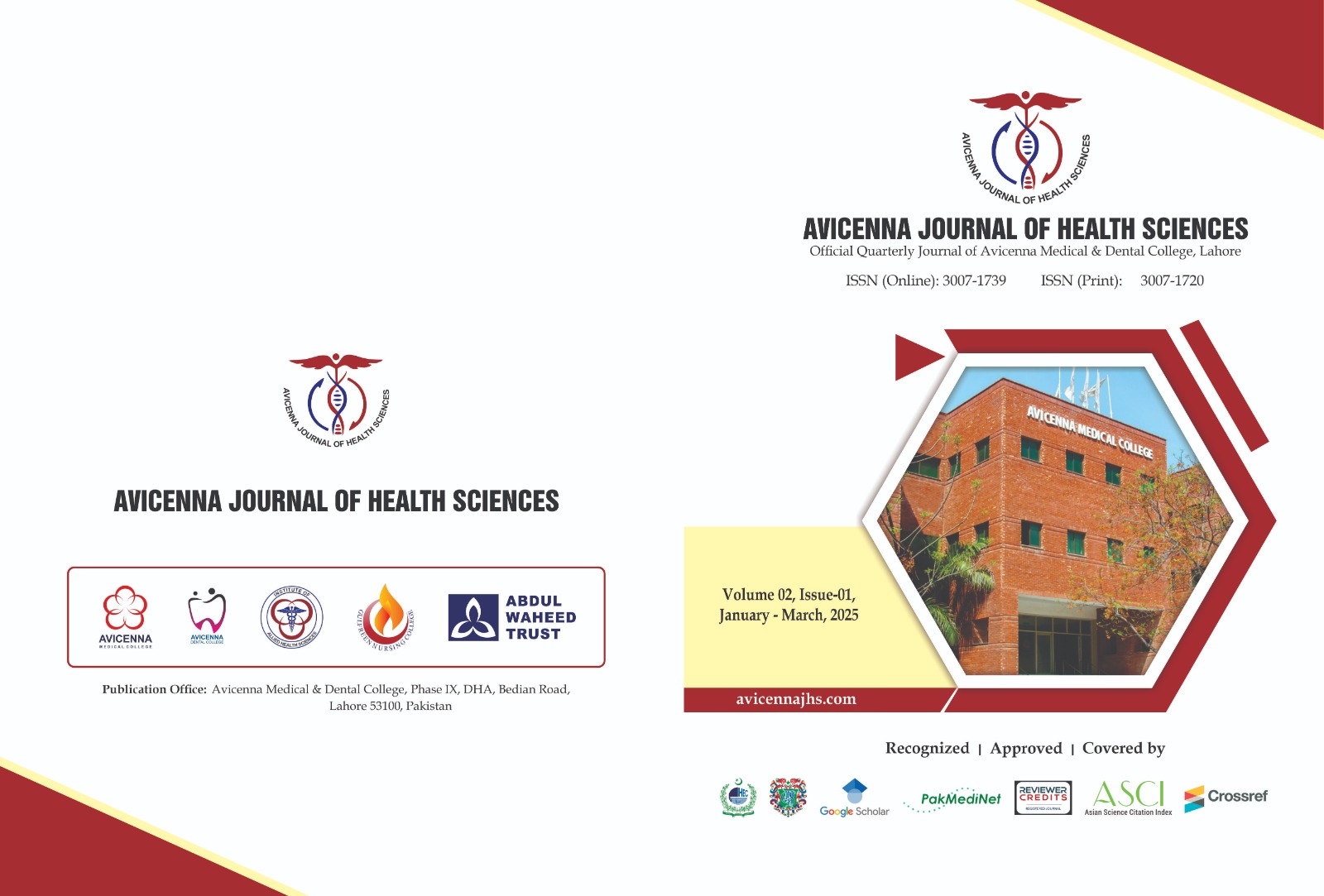Cross Sectional Study of Prevalence, Symptoms and Treatment Preferences for PCOS in Pakistani Medical Students by BMI
Keywords:
PCOS, Polycystic ovaries, PCOS symptoms, PCOS treatment, Prevalence of PCOS, Pakistani Medical StudentsAbstract
Background: Polycystic Ovarian Syndrome is a heterogeneous endocrine disorder that affects an estimated 6–20 % of reproductive-aged women worldwide.
Objectives: To determine the prevalence of PCOS in comparison to BMI, symptoms and treatment modalities preferred by female Pakistani medical students who have suffered from PCOS.
Methods: A pilot exploratory study was conducted in Central Park Medical College, using a non probability convenience sample, from June 2024 to December 2024. A total of 210 students participated in the study and were segregated into three groups based on their BMI: Group 1 (n=45) BMI < 18.5 kg/m2, Group 2 (n= 128) BMI 18.51-24.9 kg/m2 and Group 3 (n=37) BMI >25 kg/m2. Female medical students from MBBS and Department of Physiotherapy, of the age group 18 to 25 years were selected for this study. Data Analysis was carried out using SPSS version 23.0 and the results were calculated.
Results: Out of the 210 participants, 21 had self-reported, clinician-confirmed PCOS (Rotterdam criteria). Of 37 students in Group 3 (BMI > 25 kg/m²), 21 (57 %) had PCOS; of 128 in Group 2, 38 (30 %) had PCOS; of 45 in Group 1, 6 (13 %) had PCOS. It was also observed that signs and symptoms of PCOS were more pronounced in group 3. Group 3 also had a greater history of diabetes mellitus and hypertension.
Conclusion: PCOS is found to be associated with higher BMI. Weight reduction is considered the most efficient treatment modality for PCOS which is believed to help in conception and regulation of menstrual cycle.
Downloads
Published
How to Cite
Issue
Section
License
Copyright (c) 2025 Avicenna Journal of Health Sciences

This work is licensed under a Creative Commons Attribution 4.0 International License.







